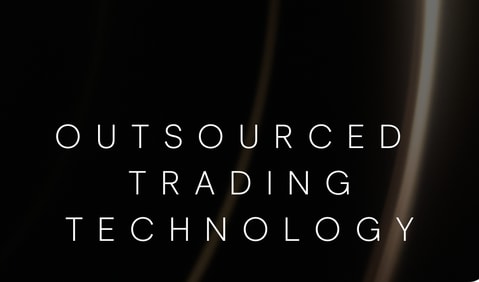Recent years have seen a resurgence in the concept of trading physical equities, with a slew of new arrivals joining the market for what is arguably one of the oldest forms of investing. But what has been the driving force behind this change in momentum?
There has certainly been no shortage of fundamental factors in play, ranging from anodyne improvements in technology reducing transaction costs, to the COVID pandemic - which initially saw many of those with surplus cash for the first time dabble with investing, before erupting with the meme-stock phenomena of 2021. But the root causes here are arguably rather more nuanced. Leveraged trading providers – many of whom already have sophisticated proprietary technology, weighty research and development budgets – have found the regulatory backdrop becoming ever more restrictive in recent years. And whilst there may be some net uptick in end user demand, this is already starting to look limited, especially for those pursuing a free trading model. Instead, the single most critical factor driving evolution here is institutional counterparties who are looking to access the widest range of assets via a one stop shop, whether that’s for their own consumption on a B2B basis or for distribution on to their own consumers.
So, what have we seen so far? The rise – and partial retreat – of product providers is difficult to miss. Many of these brokers have attempted to use technology to exploit efficiencies and reduce costs to such an extent that they can make the service free for their consumers to use. This however is a challenging play, given a combination of factors such as third party exchange and registry fees, along with government transaction taxes, all need to be accounted for. Someone has to foot the bill and ultimately when it comes to physical equity trading, there’s no such thing as a free trade.
CMC Connect spoke with financial equities broker, DriveWealth who are recognised as fuelling the future of embedded investing. They noted; “Being able to access the power of forex, fractional trading, money movement tools, and more within one simple user experience is what the next generation of retail investors is craving. So there’s admittedly a lot of pressure on brokerages and other product providers to streamline their existing investing tools - or innovate new ones - to help empower their end customers with greater control over their financial lives. There’s a certain beauty to this type of industry competition - a ‘race to the bottom,’ price-wise - because it’s really helping democratize access to financial tools, especially opening up access to new populations and demographics who otherwise would have significant barriers to entry.
But the focus on new services and tools for consumers is only part of a bigger puzzle that companies like DriveWealth are trying to solve for. From our perspective, the true innovation - and the only real way we’re going to build a better financial ecosystem - lies in the importance of the underlying tech infrastructure that powers all of these new products and services.
Traditional barriers for investing platforms or product providers, which tend to be country-specific, often refer to regulatory hurdles, sizable unbanked populations, disconnected regional financial services, and the misperception that investing is only accessible for high-net-worth individuals.
B2B investment infrastructure firms like DriveWealth are decreasing those barriers to entry for fintechs and financial firms worldwide by seamlessly handling regulatory and technology hurdles to increase customer acquisition, loyalty, retention, and revenue growth for our partners. The future of finance isn’t necessarily going to be defined just by product design and delivery - it’s going to depend on the infrastructure and engines that power those products.
Put simply: there’s a whole new segment of customers who want access to financial tools using the smartphones they already own. And now, there’s an entirely new API-driven infrastructure to make it happen.
The USA – which has a vibrant and well adopted retail investing scene – has managed to insulate itself from some of these transaction fee challenges with a concept known as PFOF, or Payment For Order Flow. Whilst this can offset headline trading costs, many jurisdictions ban the approach for retail clients, on the basis that it prevents the core best execution principle. And whilst some European providers may have adjusted terms to facilitate functions such as stock lending, the income generated here is unlikely to ever be considered lucrative.
Where does this leave hopes of a renaissance when it comes to trading physical equities? One point that has been laid bare as part of the brokerage service evolution in recent years is that there’s an outright quest for quality. This isn’t particular to share trading, but the rush of new entrants obsessed on delivering this product on a low or no cost basis has exposed the cost and complexity of facilitating on market trading at scale and often in small lot sizes.
Many of those who have ventured into physical equity trading at the discount end of the market, when faced with significant transaction costs that can’t be mitigated, have instead opted to scale back on the customer service offering. That’s fine so long as the technology holds up, but physical equity trading is by its very nature a complex animal. There’s no shortage of corporate actions such as stock splits, rights issues or dividend payments that need to be managed on a day to day basis, in addition to those basic buy and sell transactions. The reality is that problems will arise and a human will be expected to intervene to iron out the inevitable wrinkles.
Critically, institutional counterparties are taking the stance that whilst they want a comprehensive, multi-exchange physical equity offering, they need this to be backed up by an exceptional level of customer service. In turn, this needs to be funded from somewhere and that will typically mean a return to per transaction commissions, either paid for by the institution or the end user. Attempts not to charge here will, as noted above, come either with the inevitable by-product of cross-selling, or with a poor customer service experience in the long term.
This approach also augments the “one stop shop” ethos, which is becoming ever more dominant in terms of multi-asset offerings. For ease of use, reporting, margining and overall account management simplicity, counterparties understand more than ever the benefits of having a multi-instrument and multinational product portfolio all on a single platform and funded from a single currency.
Banco Invest have white labelled the CMC Connect comprehensive multi-asset trading platform. As they explain “this allowed us to create Invest BTrader Next, which provides clients with the opportunity to easily access and trade a wide range of different asset classes, including stocks, commodities, futures, options and currencies, all in one place. This way, clients save both time and effort since there is no need for navigating within different platforms to access different types of investments. On top of providing a more efficient and cost-effective way to manage a diversified portfolio, clients can also find advanced tools, such as portfolio analytics, performance tracking, and risk management to help them make more informed decisions and monitor their portfolio performance.
“To summarise, clients can find a more flexible approach to investment, which allows them to respond more quickly to market changes and find new opportunities. The platform provides a more convenient, efficient and powerful way for clients to manage their investments and ultimately achieve their financial goals.”
The global CMC Markets organisation already has its own high quality physical share trading platform. Historically, we provided the share dealing functionality for ANZ Bank on an outsourced basis, before migrating the customer base of more than one million over to CMC Markets (Australia). Throughout 2022, we have been working to make this platform portable to other jurisdictions, integrating the improved functionality into our Next Generation CMC Markets Connect proposition. That means as well as being deliverable on a stand alone basis, it can also be offered as part of our wider institutional offering, either as a white label or with corporate clients simply taking an API feed.
However it all revolves around a need to acknowledge that there are real, external costs involved in delivering these multi-asset services, especially when it comes to physical equities. Unlike off exchange trading, you can’t internalise the whole process, so those who stand to succeed in the long term here without resorting to grey-area practices such as cross selling products will need to have the confidence to be able to charge for the service. Decades ago, physical share trading was so expensive as to be the preserve of only the wealthiest. We don’t need to return to that paradigm, but as is well known in the market, there’s no such thing as a free lunch.



